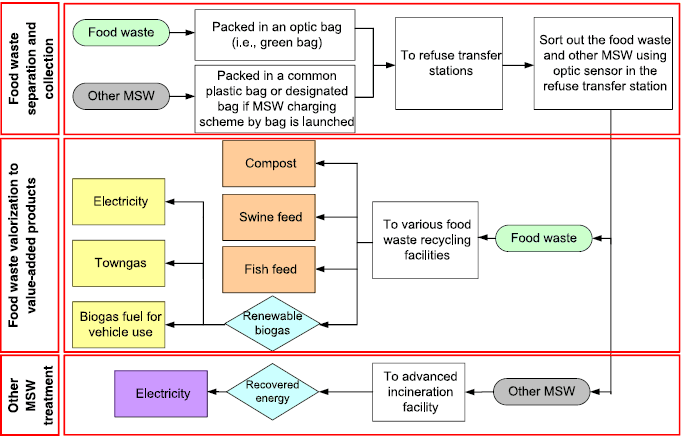Food waste is a huge problem in Hong Kong and daily about 3600 tons of food or 40% of total waste disposed, is made of food items. Out of the 3600 tons of food waste, about 69% or 2500 tons is from households while 1100 tons is from hotels. This leads to a very high and unsustainable 0.4 kg/ person/ day. The estimation is that by 2020, the three landfills used for waste disposal would reach their capacity. Communities are taking up different practices to manage disposal of this waste (Lo and Woon, 2016). This paper examines the extent of food waste and the steps taken by communities for safe disposal.
Analysis of food waste Disposal: A major problem is food recycling and only 0.6% of the total food disposed is recycled. Other nations such as South Korea and Taiwan have recycling rates of 95% and 31% respectively. While prevention and reduction of food wastage is the first priority, a large amount of food is wasted. Disposing food in landfills is not environmentally friendly, it causes diseases, poisoning of water bodies and the air. The Hong Kong Special Administration Region (HKSAR) Government organization has taken up measures such as creating awareness, donation of food, recycling and treatment, segregation and disposal and other activities (Lo and Woon, 2016). HKSAR has developed a framework for waste disposal, illustrated in the following figure.

Figure 1. Framework for waste disposal (Lo and Woon, 2016, p. 7082)
As seen in Figure 1, optic bag are recommended to pack segregated food waste and other municipal solid waste. The waste can be sorted and transferred using optic sensors in the refuse transfer station. Segregated food waste valorization is used for generation of electricity, town gas, and biogas for vehicle used. Some of it is used to manufacture compost swine feed and fish feed. Other segregated waste is used for incineration and the recovered energy is used to generate electricity. The framework was developed in conjunction with practices in Sweden, Finland, and France. Hong Kong has set up a plant to manufacture optic bags and the cost is 0.1 HKD/bag, while a plant for optical sorting would cost about 30.5 HKD million. Byproducts such as compost and food for swine and fish and waste for electricity generation have sufficient demand. However, Hong Kong authorities have banned the use of waste food for swine feed since there is a danger of mad cow disease, and foot and mouth disease (Lo and Woon, 2016).

Practices in other countries: In Taiwan, food must be discarded at designated times and location. In Sweden, multi compartment bins system is used with 2-4 compartments for apartments and commercial places. In London, Vancouver, Seoul, and Dubai, a MiniVac system is used where food waste from commercial places is dumped in strategically located inlets in the kitchen and sucked out by using vacuum through a pipe network to refrigerated storage unit in the basement and onward for further disposal (Lo and Woon, 2016).
The paper examined the increasing problem of waste food disposal in Hong Kong and the measures taken to address the issues. While HKSAR has developed a framework for collection and disposal with valorization and using waste to generate feed for swine and fish and to generate electricity. An important aspect is to create awareness among residents to avoid wasting food. Preventing food waste is much better than finding methods to dispose.
- Lo, I. M. C. and Woon, K. S. (2016). Food waste collection and recycling for value-added products: potential applications and challenges in Hong Kong. Environment Science Pollution Research, 23: 7081-7091.
